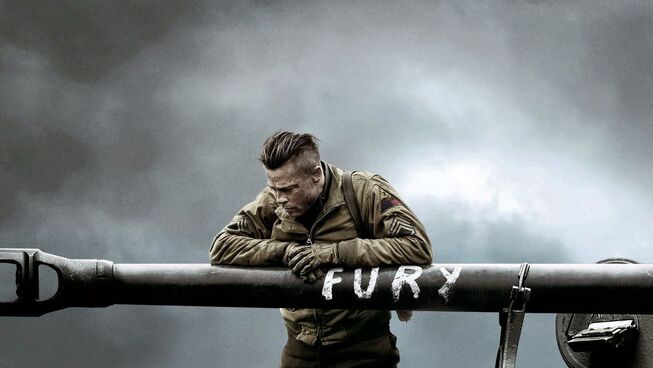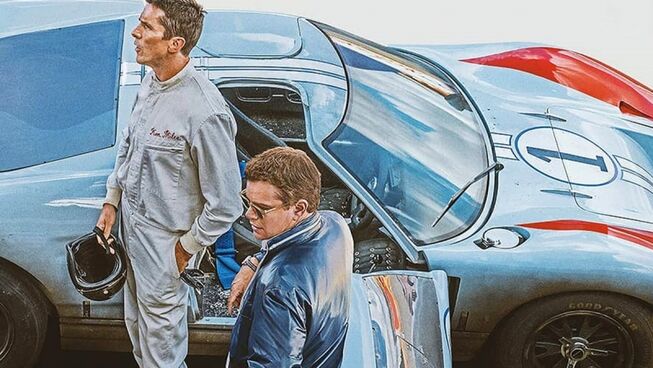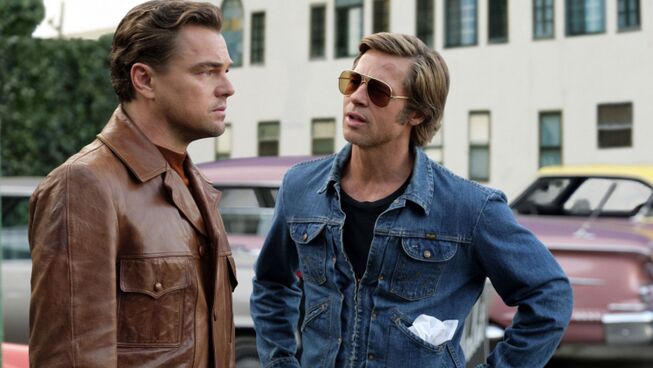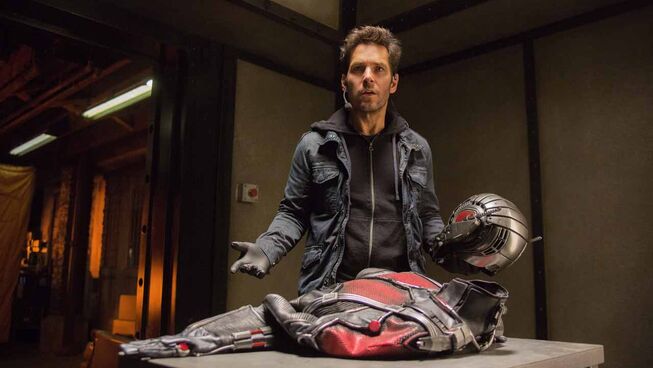
5 out of 5 stars
A German officer is riding a beautiful, white horse through a battlefield The field is murky and covered with the devastation of war. It is hard to know which soldiers are lying on the ground, because they are covered in smoke and mud. Suddenly, from behind a tank, a US soldier jumps on the officer, kills him and frees the horse. The US soldier casually gets back into his tank and heads off to base camp with his crew.
The opening scene is raw, brutal and shocking and that is an accurate description of rest of Fury. David Ayer's (End of Watch) new film shows the wartime realities from the perspective of soldiers in a tank division during WW2. Fury is the name of their tank and represents their existence. The film is shown in April of 1945, the Allies are making their final push towards Berlin and the end of the war. The Americans ground war is heavily reliant on the armour and fire power of Sherman tanks. From within the armoured exterior of the tanks, Ayer's film provides a wartime view from within the heart of the tank. Showing the war from inside the tank and how the men contend with the fear of the potential coffin the tank can become and the challenges of close quarters of five crew men. The battle-hardened crew is led by army sergeant, Wardaddy (Brad Pitt).
They have fought together for the many years and have fought the Nazis in Africa and Europe. Their dependence on each other for survival is evident, but the expected tensions of war-time stress and close living conditions leads to a fascinating on-screen chemistry. When one of their crew is killed in action, a new man is given to the close knit crew. Norman (Logan Lerman), a clerk typist, has to learn to drive the tank and is quickly exposed to the brutal nature of war. He learns from Wardaddy and the crew that to survive he has to come to terms with the 'us or them' mentality of combat. Beyond the internal challenges of the tank, the Fury crew get pushed into a position of leadership and protection of an infantry platoon. They lead the men throughout the countryside and towns of Germany. Finally, they are left with the assignment of securing a crossroads and confronting a final wave of German SS soldiers. The Fury crew find themselves out-numbered, out-gunned and they have to determine if they will make a sacrificial stand for the sake of the platoon.
Ayer has put together a brutal and visceral depiction of war as the backdrop for a story of interconnectedness of men at war. The landscape and battles are well filmed, but do not leave any false pretences of glory. Each battle brings a devastating reality to the war effort and understanding the mindset of the men who have been put into these surreal situations. Seeing the atrocities that mankind can do to one another in loss or victory is sobering and is a stark contrast to many epic war films of the past. There are many effective battle scenes, but the tank battle scene between three Sherman tanks and a German tank is one of the best choreographed battles in modern film. The realistic style of filming may cause some to avert their eyes, but for those who can stomach the visual display will have a better understanding for the attitudes and demeanour of the men in the tank.
David Ayer manages to write a film about men who can love one another as men and not feel the need to incorporate any unnecessary sexual undertones. The relationship between the battle hardened David and Jonathan from the Bible came to mind in watching this film. Brad Pitt delivers a stellar performance as Wardaddy and is at his stoic best. He shows the strength needed for an effective leader, but through the many layers of a battle hardened soul he is able to convey a vulnerability and love for his men. He is surrounded by a crew of men who form an effective, but flawed symbiotic unit.
Shia LaBeouf has been given one of the best roles of his career and he takes it on with unapologetic fervour. Boyd 'Bible' Swan is the heart and conscience of the tank crew and could have easily become a clique as he quotes Bible passages, but this is not the case with this character. Swan is willing to get into the fight alongside his crewmen, as well as, hold his own in the verbal battles with anyone willing to listen to him. He is loved by his crew and is never trivialised because of his beliefs. The final interchange of Bible quotes between LaBeouf and Pitt is a refreshing dialogue between men and shows a depth of friendship and respect. Michael Peña and Jon Bernthal round out the cast as journeymen who add the needed comic relief and relationship bonding for this type of film. The surprise of the film was Logan Lerman's performance. Coming off his performance in Noah, Lerman is has shifted from teenage actor to adult contender and is proving to be a mature actor that will be worth watching. Throughout the film, Norman quickly grows from innocence to maturity and Lerman effectively conveys this critical transformation. This war time film is truly a character play that develops some great roles in today's cinema.
Fury does not pull any punches when it comes to depicting the the realities of war. The violence, the language and conversations of men who have been through so much together garners a warning for discernment. This is not a film for young audiences or for those with a weaker constitution. But unlike most Quentin Tarantino films, Fury does not push the violence to excess. The brutality seems to convey an honest depiction of war and shows the value of masculine camaraderie. David Ayer has put together a great war film that does not glorify war, but shows how something glorious besides battle victory can come from it.
In an era where video games can cause a desensitising to violence, this film shows the realities of war and there is no reset button in real life. Yet, it was not just a life-lesson film, this was a well crafted film that is entertaining and moving. Some of the nuances of the male friendship will need explanation to some, but this film's value can be seen in the good character and relational development of the tank crew. Even under its tough exterior, this film proves to have heart and soul.
Reel Dialogue: What are the bigger questions to consider from this film?
1. Is the God of the Bible a God of justice? (Psalm 37: 27-29, Romans 12:19)
2. What is the view of war in the Bible? (Ecclesiastes 3:8, Matthew 24:6-7)






